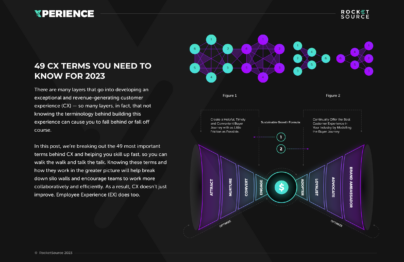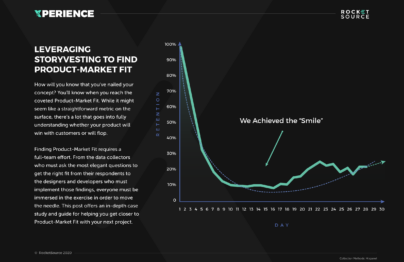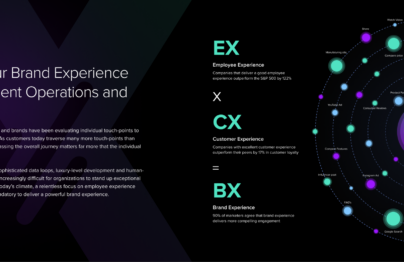The North Star Metric is a single metric, or set of motion metrics, that a company focuses on at each stage of the S Curve of Growth. This metric is a key indicator of long-term success across an organization. In other words, the North Star Metric is an output metric representing a result rather than an action or driver of work.
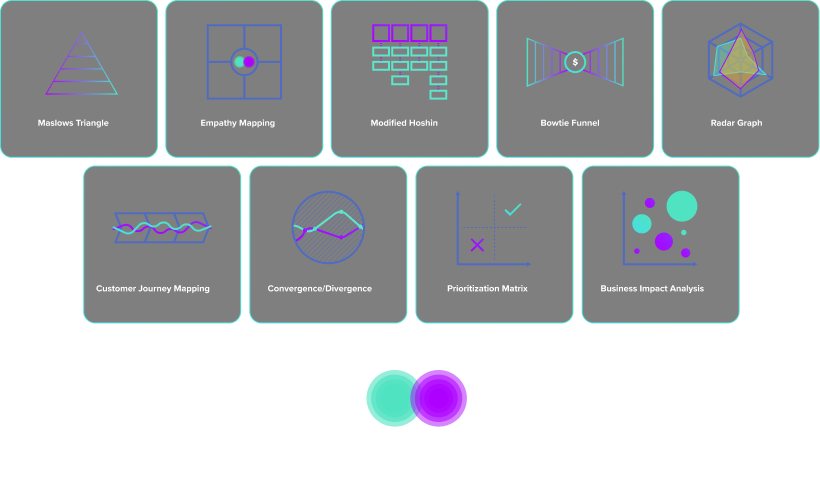
A Data Explosion Led to Revenue Operations
In the past, businesses held most of the cards regarding a transaction. For the customer to receive value from the business, they had to pay up. That’s not the case anymore in today’s highly competitive and complex marketplace. Today, customers can make or break a business.
Because the pendulum has swung so far back, putting most of the power in the customer’s hands, organizations have had to start thinking more in-depth about how they reach their buyers and grow revenues before, during and after the sale.
A Quality North Star Metric
Finding the right North Star Metric for an organization isn’t as easy as deciding on a metric to follow. It requires depth, detail, and discernment around what truly matters to a company. Getting there requires you to ask the right questions and filter out your idea for metrics based on the following criteria:
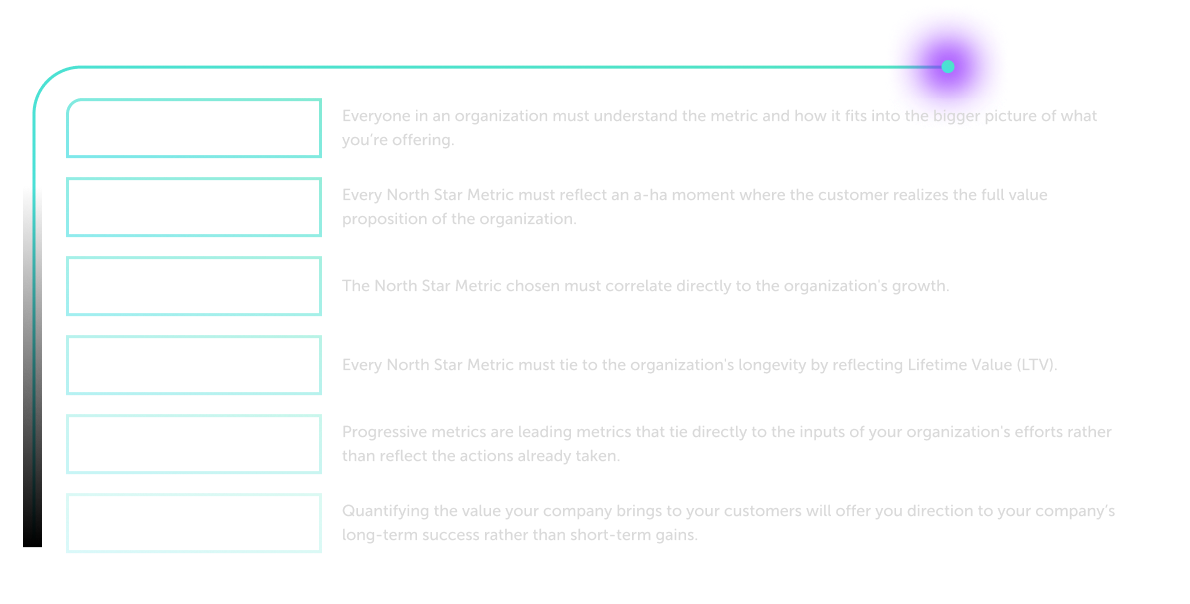
Finding Your North Star Metric
The process of finding your organization’s North Star Metric isn’t a back-of-the-napkin exercise. Choosing the wrong metric can put your company on the wrong trajectory, causing more damage than good. Uncovering the right North Star Metric requires that you unravel what it will take for your company to continue up the S Curve of Growth.
Start With the End in Mind
A quality North Star Metric should start with the end in mind by focusing on retention. Retention is what will drive predictable growth through the bow tie funnel. It’s here where organizations can get deeper into why customers stay and what inspires cohorts of customers to continue buying from the business.
Leveraging Behavioral Frameworks
Behavioral frameworks, like StoryVesting, layer and align the behaviors of your business and your customer. Bringing these internal and external behaviors closer together empowers you to track forward momentum using nuanced data about how people make decisions.
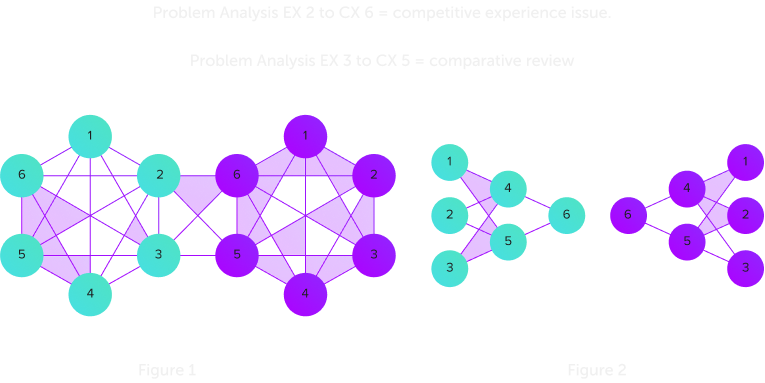
A Constellation of Metrics
Opting for a singular North Star Metric means you can only look at one area of the business. This limited dimension of what’s happening could leave other key areas in the dark. By choosing a constellation of metrics in motion from department to department, you can become more predictive and have a clearer viewpoint of what’s happening across the organization.
Developing a North Star Metric
Developing a North Star Metric for your organization starts with researching your audience’s behaviors. It requires that you segment the areas between emotional and logical reasoning at every stage of the buyer’s journey. In doing so, you can prioritize which areas are most important concerning your competition, current offers, and conversion micro-moments.
With those in mind, it’s time to prioritize which emotional and logical drivers cause a person to stay based on their customer journey. Identifying the friction points where conversions drop off or retention plummets can clue you into the areas that matter most to your customer and, thereby, your organization.
Once you have your North Star Metric or the set of motion metrics, you will keep that same metric until you reach another inflection point on the S Curve of Growth.
North Star Metrics Which
Enforce Value Proposition
Sales Cycle
The amount of time it takes to close a sale.
Motion of Sales Cycle
Changes in the sales cycle as new strategies are implemented, and new goals are determined.
Lifetime Value (LTV)
How much can you earn from your customers over their lifetime?
LTV:CAC
The ratio determines whether you allocate the right resources to drive long-term growth effectively.
Content Engagement
Engagement from your business, marketing content, and/or your deliverable.
Revenue per Employee
How much you bring in per employee or contractor on your team?
Month-Over-Month Revenue per Employee
The effectiveness of the alignment between your value proposition, operations, and strategy.
Profit per Employee
The profitability of each employee on your team.
Month-Over-Month Profit Per Employee
Your organization’s momentum and the viability of your model based on that momentum.
Repeat Revenue Expansion Per Client
How much revenue can you grow monthly per client?
Revenue Expansion vs. Cost of Acquisition
How well your growth levers are working on expanding revenue without increasing CAC?
Customer Experience (CX) Terms
- 360° Degree View of the Customer
- AI Ops
- Barlow Bands
- Behavioral Triggers
- Bow Tie Funnel
- Brick-to-Click
- Business Impact Analysis (BIA)
- Cognitive Computing
- Cohort Analytics
- Content Mapping
- Conversational User Guidance
- Customer Data Profile
- Customer Experience (CX)
- Customer Friction
- Customer Insights Map
- Customer Journey
- Customer Journey Mapping
- Customer Satisfaction (CSAT)
- Customized Ratios
- CX Intelligence
- CX Led Growth
- CX Metrics
- Data as a Product (DaaP)
- Data as a Service (DaaS)
- Data Culture
- Data Driven
- Data Engineering
- Data Fabric
- Data Governance
- Data Humanization
- Data Hygiene
- Data Looping
- Data Mapping
- Data Mining
- Data Modeling
- Data Monetization
- Data Swamp
- Data Visualization
- Data Warehouse
- Data-Centric
- Descriptive Analytics
- Diagnostic Analytics
- Digital Asset Management (DAM)
- Digital Transformation
- Dirty Data In Dirty Data Out
- Embedded Intelligence
- Empathy Mapping
- Employee Data Profile
- Employee Experience (EX)
- EX to CX Data Mapping
- EX to CX Mapping
- Experience Management (XM)
- Gap Analysis
- Generative AI
- Human-Centered Design (HCD)
- Journey Analytics
- Machine Learning (ML)
- Managed Agile Services on Demand
- Modified Hoshin
- North Star Metric
- Party Data
- Pathway to Purchase
- Predictive Analytics
- Product-Market Fit Mapping
- Real Time Design Looping
- Revenue Acceleration
- RevOps
- S Curve of Growth
- Stack Impact Analysis
- StoryVesting
- Table Stakes Testing
- The 3 P’s
- User Experience (UX)
- User Insights Map
- User Interface (UI)
- Voice of the Customer (VoC)
- Voice of the Employee (VoE)
- World Cloud Generator Sentiment Mining
- X Analytics

